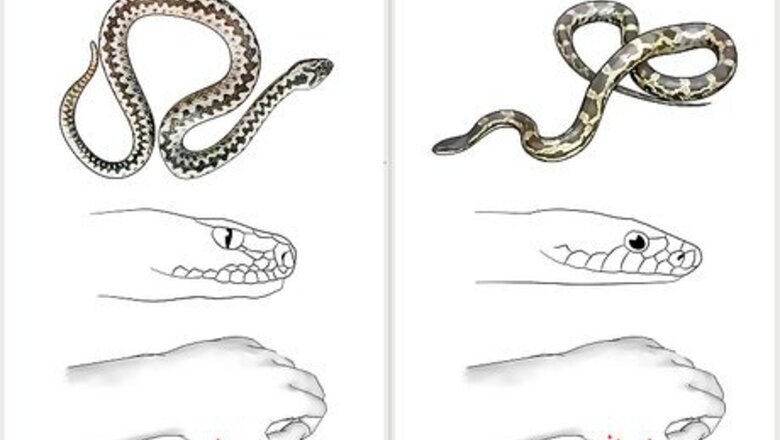
views
Protecting Yourself During Outdoor Activities
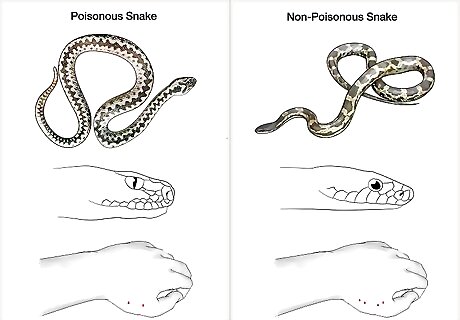
Learn about snakes that are native to the area. Whether you are visiting a new location, or staying in your own backyard, you should familiarize yourself with the snakes native to your area. It is important to learn both the venomous and non-venomous snakes that live near you, and how to distinguish the two. Before you head out on an outdoor adventure in a new area, learn about the snakes that are native there. Again, while you certainly want to avoid all snake bites, you'll want to understand the differences and urgency levels in treating both kinds of bites, venomous and non-venomous. Some snakes, like the coral snake and the king snake, look very similar. While they both reside in similar areas, only the coral snake is venomous. It is important to be able to distinguish between similar looking snakes, especially when one is venomous.
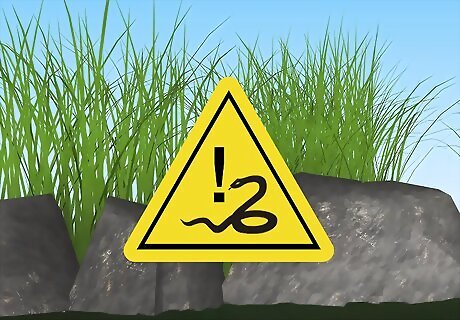
Avoid areas where there is tall grass and brush. Try to stay on trails or clear areas where you can see where you step. If you must go into tall grass or brush, use a long stick to probe the area before stepping into it. Snakes use natural coverage, like tall grass and weeds, to protect themselves from predators, to avoid extreme temperature and to hunt for prey. Trails have fewer hiding spots for snakes, so it is better to stay on clearly marked paths.
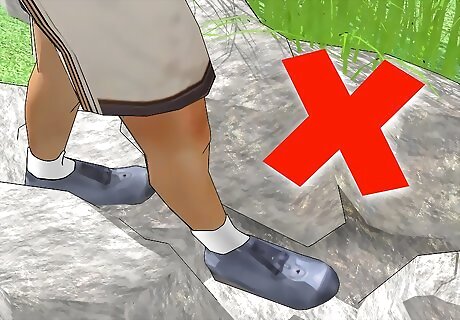
Resist sticking a hand or foot into a crevasse or hole. Snakes often curl up in dark places like holes in fallen timber or in hidden spots among boulders. Look carefully before you step or place your hand anywhere. This is especially true when rock climbing or exploring in caves. If you come across a crevasse, it’s best to leave it be. If you do need to poke around, use a long stick to prod into the area to make sure it is empty. Snakes do not dig holes, but they do use holes dug by other animals to hide. So what looks like a hole dug by a chipmunk or mole may really contain a snake.
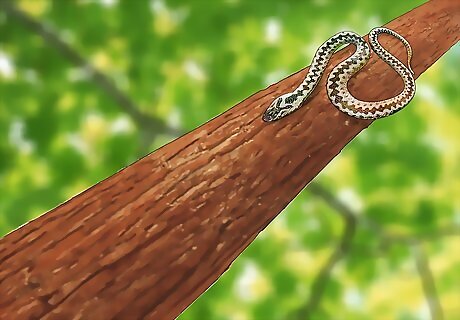
Remember that snakes can climb trees. Be careful while walking under low hanging branches, or when climbing up a tree as you could easily mistake a snake for a branch. Snakes can slither up trees and can hang down to be head height. It’s best to keep your wits about you at all times, and remember that snakes can be hiding out nearly anywhere.
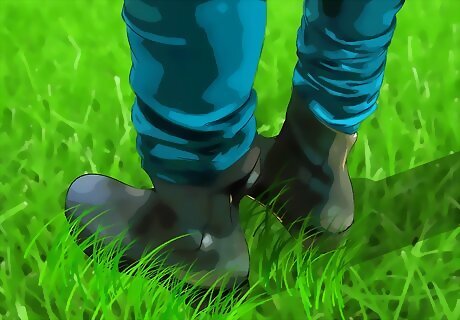
Dress in protective clothing when you are out in the wilderness. Wear heavy boots and long pants. Never go barefoot or wear sandals in areas where you are unable to clearly see where you’re putting your feet. When you are walking through grassy areas, you should wear closed toe shoes to prevent bites. Thick materials, like leather, are less likely to be punctured by a snake’s fangs than a thinner material, like canvas. Loose fitting long pants are better than tight fitting pants. This way, in the event that you are bitten, there is less of a chance that the snake’s fangs will reach your skin.
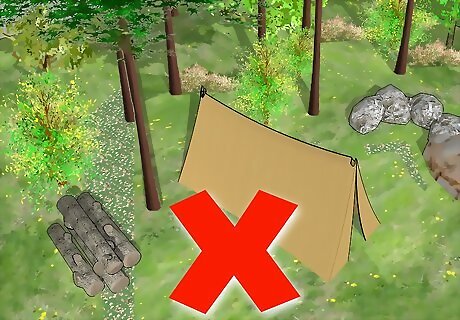
Avoid making camp in potential snake habitats. Don't camp near large logs, rocky areas or tall grass. Many snakes are nocturnal so you will want to be especially careful at night. Zip your tent up tightly and sleep on a cot when possible, since you are less likely to be bitten on a raised surface. Use a flashlight to check inside shoes and the floor of the tent before you venture out at night to use the latrine or portable toilet. Shake out clothing, shoes, and sleeping bags before use to dislodge any hidden snakes.
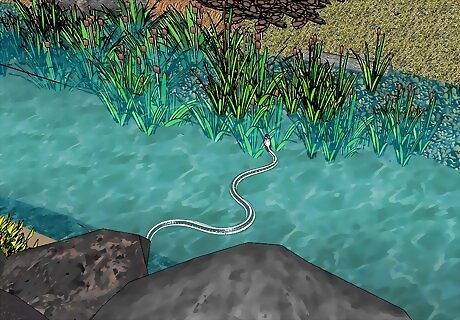
Be cautious when swimming, wading or fishing in lakes or rivers, especially after heavy rains. Water snakes are venomous and you could be in dire need of help very quickly if bitten. Depending on you area, there may or may not be water snakes. After heavy rains, snakes are more likely to be in water due to flooding in their habitat. Heavy rains also drive snakes into the open since their favorite hiding spots may be flooded. Avoid swimming in muddy waters, or waters with vegetation since these are favorite hiding areas for water snakes.
Preventing Snake Bites at Home
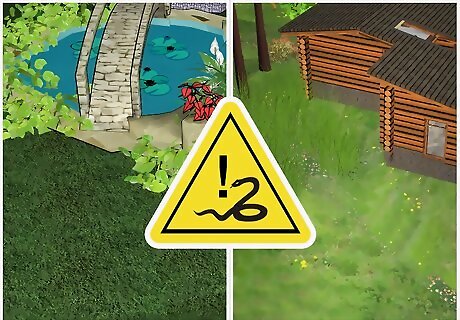
Keep your yard and adjacent property mowed. Trim hedges and clear brush to discourage snakes from taking up residence near your home. Just like in the wilderness, snakes use tall grass and brush to hide. By keeping your grass short, you can lessen the possibility that a snake will be hiding in your yard.

Educate children about snakes. Children must be taught that snakes can be dangerous and that they should be avoided. If you have children in the home, educate them about the different types of snakes that live in your area and the danger that they can pose. Discourage them from ever trying to play with or catch a snake. Keep your children from playing in areas where snakes could be hiding. Discourage them from going to nearby vacant lots where there is high grass and brush.
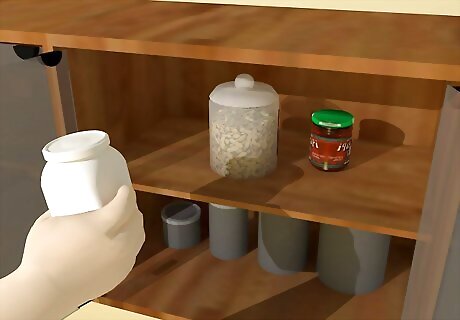
Use care when handling stored yard materials. Use an implement when gathering firewood from an outdoor stack or when working with brush or lumber. Wear boots and gloves to protect yourself as well. Snakes like to hide in cool and dark areas for shelter, like firewood stacks and near sheds. Before you reach your hands into these areas, use a long stick to prod around. This will alert any snakes hiding inside that you are present, and they will likely try to escape rather than confront you. Use extreme care in the summer during drought conditions. Snakes will seek water around your garden hose, swimming pool, or under your air conditioning unit.
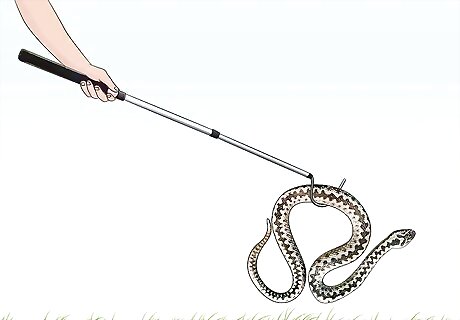
Take precautions if you own a snake to avoid being bitten. If you happen to have a pet snake, you will need to be a responsible owner. While it is unlikely that you have a venomous snake as a pet, you still want to avoid being bitten. Use a snake hook to handle your snake rather than using your hands. The majority of bites occur during feeding time, so it is important to be extra cautious during this process. Choose a docile snake as a pet. Corn snakes and ball pythons have reputations as snakes that are reluctant to bite. Don't handle your snake after having touched prey, such as mice, while the scent is still on your hands.
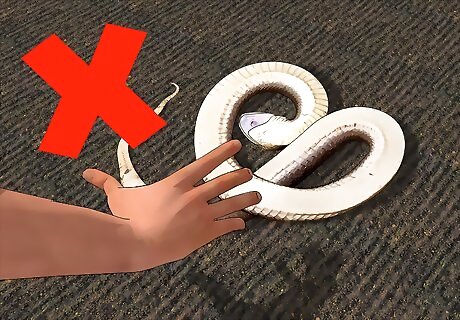
Use extreme caution if you ever have to approach a snake. This is also the case if you think the snake is dead. Recently killed snakes still can move reflexively and even bite. Also a snake may look dead, but simply be lying very still as it suns itself. Never try to handle a snake or handle it. Many experts suggest that you avoid trying to kill the snake as well. If you see a snake that you recognize as poisonous on your property, note the location and call an animal control officer. Keep children and pets out of the area until the officer can come and try to remove the snake, if it is still in the area. The majority of snakes will try to flee the area and avoid contact if you ever happen upon them or their habitat. If you ever come into contact with a snake, back away slowly and avoid making sudden movements and loud noises. The snake can perceive these as threats and may be more inclined to bite when it feels threatened.




















Comments
0 comment